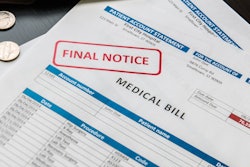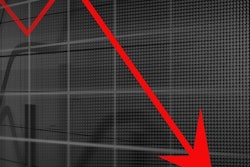
Annual spending on dental care in the U.S. is projected to tick up over the next several years, ballooning to $230 billion by 2030, according to a briefing on March 28 from the Office of the Actuary at the U.S. Centers for Medicare and Medicaid Services (CMS).
Though dental expenditures are expected to climb, they are small compared to total health spending, which is projected to inflate to $6.8 trillion by 2030. The data also was published March 28 in Health Affairs.
The CMS Office of the Actuary routinely releases an analysis of how people in the U.S. are expected to spend their healthcare dollars in the coming years based on the current law and trends. As the effects of the COVID-19 pandemic wane, health spending growth is expected to be moderate.
"While there is still considerable uncertainty around the COVID-19 pandemic, its related health and economic impacts are projected to lessen in the next few years," John Poisal, deputy director for CMS' National Health Statistics Group, said. "From 2025 onward, we expect economic and demographic factors to reemerge as the most influential drivers of health sector spending trends."
Pandemic still impacting health spending
In 2020, dental health spending was $142.4 billion and is projected to increase to $166.4 billion in 2021. Dental spending is then expected to dip slightly to $165.6 billion in 2022 before rising through 2030, when it is projected to reach $230.1 billion, according to the data.
Meanwhile, the rate of overall U.S. health spending grew 4.2% for 2021, reaching nearly $4.3 trillion. That rate is down from 9.7% growth seen in 2020, which was driven by large inflows of U.S. supplemental funding to mitigate the impacts of the pandemic on the sector.
The average rate of health spending growth is predicted to be 4.9% in 2022 through 2024. The rate is forecast to be 5.3% from 2025 through 2030, Poisal said.
After the declines observed in 2020, healthcare use is expected to rebound and normalize through 2024. In addition, by 2024, the government share of health spending is expected to fall to 46%, down from an all-time high of 51% in 2020, as COVID-19 supplemental funding is expected to wane.
Spending growth varies for private, public insurance
Spending growth for Medicare is expected to be 7.5% in 2022, then fall to 5.9% in 2023. For the period between 2025 and 2030, Medicare spending growth is expected to average 6.8%, which is like longer-term norms, Andrea Sisko, PhD, an economist with the Office of the Actuary, said.
The decline is because of slowing projected rates of growth in use and intensity of services. The rate is influenced by "scheduled increases in sequestration cuts and the slowest projected enrollment growth since 2004 as the last baby boomers enter the program in 2029," Sisko said.
Spending growth for low-income program Medicaid is also expected to slow in 2022. The growth rate is projected to be 5.7% in 2022, then drop to 2.7% in 2023. Between 2025 and 2030, the average spending growth rate for Medicaid is expected to be 5.6%, Sisko explained.
The near-term decrease is because states are expected to trim enrollment after the assumed end of the public health emergency and, along with it, the Families First Coronavirus Response Act of 2020's maintenance-of-eligibility provision. The provision provided an incentive to states in the form of an increased U.S. medical assistance percentage to not initiate disenrollments during the public health emergency.
As for private health insurance, spending growth is expected to accelerate to 8.3% in 2022, driven by growing demand. That rate will fall slightly to 7.1% in 2023 and 6.2% in 2024. During the period between 2025 and 2030, private health insurance spending growth is expected to slow to 4.8% in a lagged response to earlier slowing projected income growth, Sisko said.




















